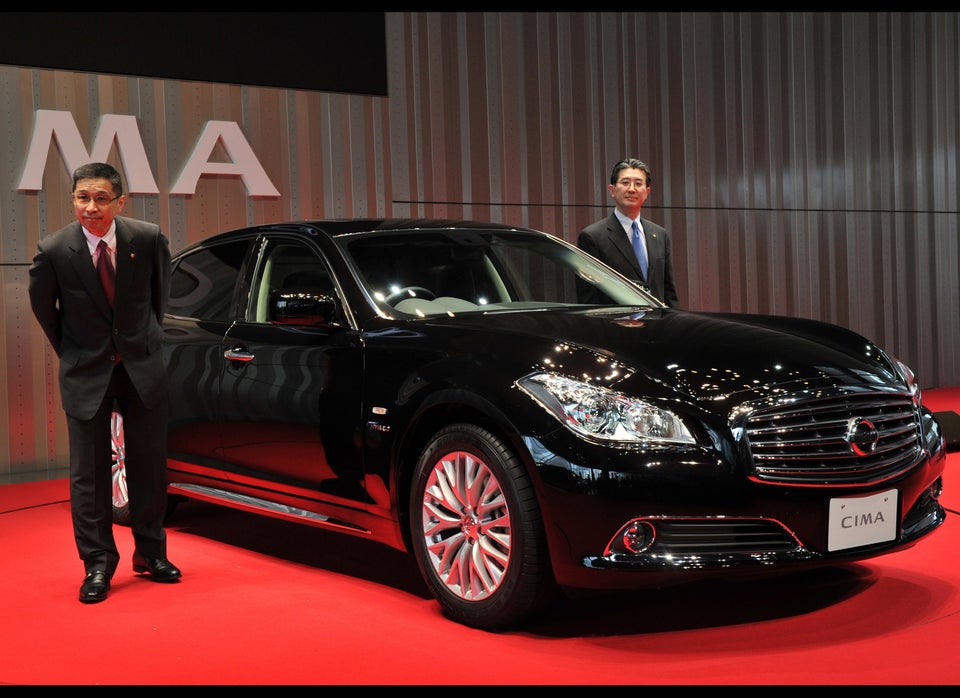In all the hoopla over an Obama-supported EV battery company going bankrupt, it’s OK if you missed the announcement that electric cars will soon benefit from made-in-America fast charging. Is four hours too long for a charge? Well, how does 20 to 30 minutes grab you?
Electric cars aren’t exactly zooming out of the showrooms, and a key to having them succeed is making them painless for consumers. That means cheaper prices, longer range, and a charging experience equivalent to getting gas from the SaveMart. That moment is coming closer. The obvious solution—fast chargers next to the gas pumps—is now more likely.
The breakthrough is that the SAE International standards agency has finalized work on a U.S. 480-volt fast-charging standard. Until now, we’ve been dependent on the Japanese CHAdeMO standard, which is what you’ll find in the Nissan Leaf and Mitsubishi I-MiEV. CHAdeMO uses a totally different plug than the American 240-volt J1772, so that meant two different outlets on the car. The new U.S. standard combines 240- and 480-volt charging into a single “combo” plug to make things easier.
The good news is that Audi, BMW, Chrysler, Daimler, Ford, General Motors, Porsche and Volkswagen are all supporting the combo plug, so that bodes well for the future of U.S.-Europe compatibility. China has its own fast-charging standard, though, and Japan will likely stay with CHAdeMO. A full charge with any of these units will probably take 30 minutes or more, but a jump from 20 to 80 percent capacity (which is what you're actually going to need in the real world) will take only 20.
American automakers, who sit on the SAE advisory panel, say they like a combo plug better than CHAdeMO because it will allow a single charge port hidden behind what used to be the gasoline filler. OK, but the days of electrics that are converted gas cars is probably coming to an end. To really succeed, EVs need to be just that from the start. The Tesla Model S, an electric all the way, shows the advantage of this—it has the batteries mounted cleanly underneath, and trunk space both front and rear. The charge port is neatly incorporated under the left taillight lens (above).
Tesla, by the way, has opted out of the whole standards debate by creating its own network of incompatible Superchargers. CEO Elon Musk introduced me to Tesla’s charging system, and he couldn’t hide his contempt for the admittedly ugly combo plug. The Superchargers use an elegant and relatively tiny plug (the phasers on Star Trek come to mind) but the network is not currently set up to charge anything but the Tesla Model S.
On video, here's Tesla showing off its Supercharger in typically flamboyant fashion last month. It was Tesla, so of course it was earth-shattering and unprecedented:
SAE should have acted faster, because in the long wait for an American standard a network of CHAdeMO-enabled fast chargers were put in place around the U.S., including the units I visited at Cracker Barrel restaurants in Texas. These high-voltage machines cost $50,000 so it’s a big investment gone to waste unless the existing units can be converted to use the combo plug (they probably can be).
Overall, this is a good thing. With a combo socket standardized on U.S.-spec electric cars going forward, there’s an incentive to make fast charging more widely available. There’s always been a business case to make for restaurants, movie theaters, supermarkets (Whole Foods has already taken the plunge) and other go-to destinations to provide EV charging. With 480 volts, a near-dead car can be recharged in the time it takes to shop for organic peanut butter.
Here’s one way of looking at it: If organic market A has free fast charging, and organic market B doesn’t, which one are you going to patronize? The cost of the electricity is negligible, though the charger itself is a major capital investment. There’s a major boost to the green image, too.
I’ve been cruising the local public chargers and haven’t seen much use yet, but that’s to be expected. EVs are still thin on the ground, unless you’re in California (particularly San Diego, Los Angeles or the San Francisco Bay Area). Forty percent of all the electrics sold are in one state. But there are definitely signs of life. For instance, according to the Union of Concerned Scientists, model year 2012 plug-in hybrid sales of cars like the Chevy Volt are running at triple the rate of last year, and hybrids are up almost 50 percent compared to 2011.
Battery electrics are moving more slowly, but fast charging is just one more advantage that will make the zero emission option work better for Americans.
